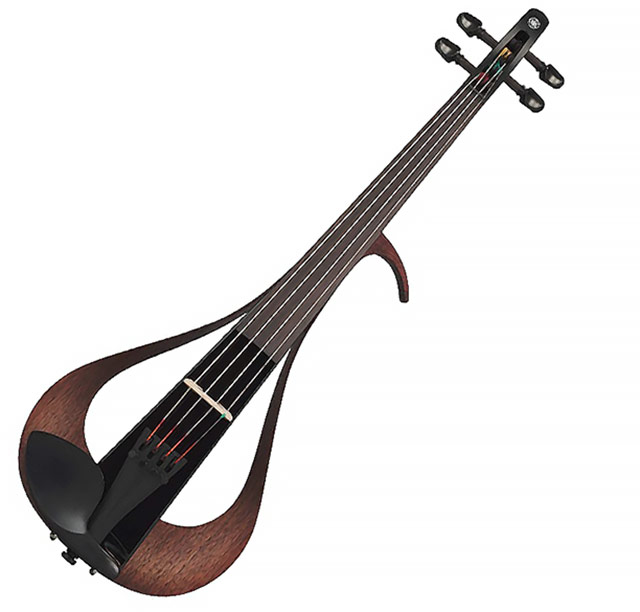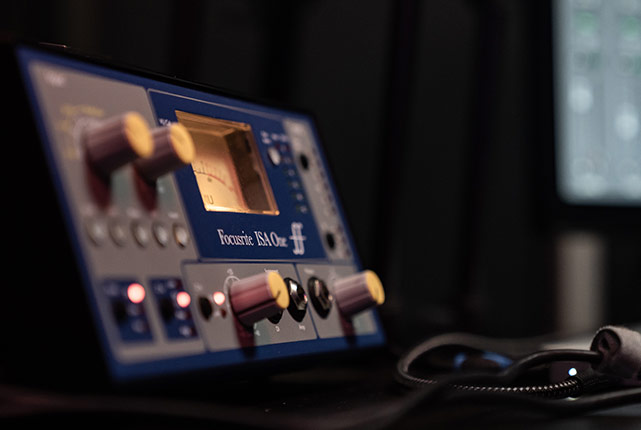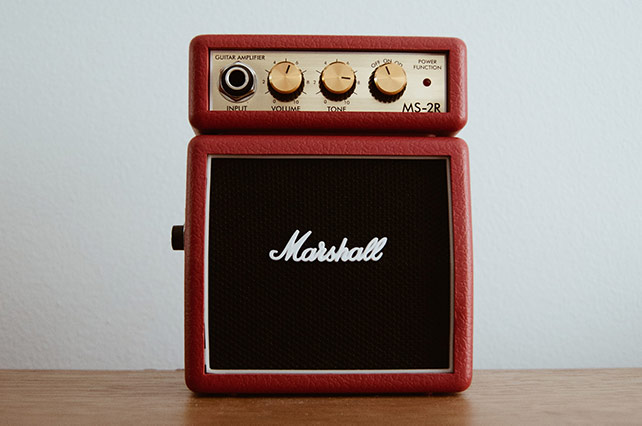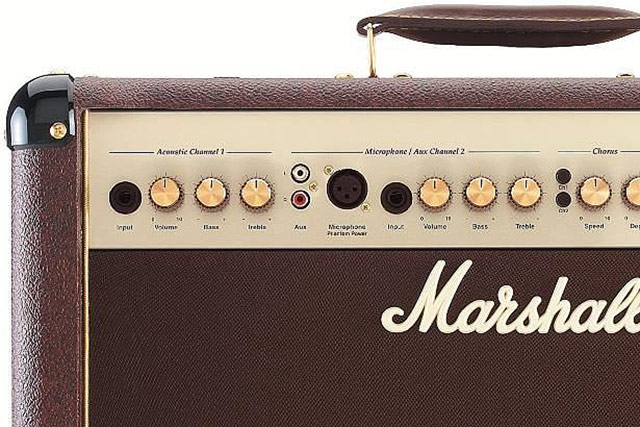The electric violin, unlike electric guitars, is a niche instrument and not as famous even though they have been around for over a century. Being a niche instrument preferred by some musicians in specific genres, amplifiers designed specifically for electric violins are not very common and easily accessible. This brings us to the question — can we use a guitar amp for electric violin? The answer to this is — yes.
Most violinists also use standard guitar amplifiers for playing as these have been around for so long and are time–tested. Would you get the desired tone using just any guitar amp? No, it would depend on a lot of factors which we’ll be discussing in this article.
Read on to learn everything about using electric violins with guitar amps but first, let’s start with the history and how electric violins work.
What Exactly is an Electric Violin?
Electric violins are solid–body instruments that come with electronic pickups. The pickup converts the strings’ vibration into electrical signals, which then go through to the amplifier that produces the sound.
The term “electric violin” may also refer to acoustic violins (with a hollow body) that are fitted with pickups by the manufacturer or by the violinist. Although the correct term would be “electro–acoustic violin”.
Electric violins have a long history. The first one was “invented” by a musician named Hezekiah Leroy Gordon Smith in the 1920s, who essentially transformed an acoustic violin by fitting a pickup. The first mass–produced electric violin, however, was introduced by Fender in 1969, but it wasn’t until the 1990s that electric violins became more mainstream.
How Do Electric Violins Look?

Solid–body electric violins, which are the “true” electric violins in the purist’s sense, generally look different from regular violins. They usually have an altogether minimalistic look and can be made of Kevlar or fiberglass, among other materials. Unlike electric guitars, these instruments do not have a set design, and different manufacturers often use different designs. It is not uncommon for violins to have frets and extra strings, including baritone and resonance strings.
How Do Electric Violins Sound?
Solid–body electric violins have a different sound signature, which can be described as somewhat “sharp” and “shrilly” compared to acoustic violins but is often seen as a desired characteristic, especially in rock music.
Semi–hollow violins produce a sound closer to an acoustic violin with the help of a closed hollow chamber that creates resonance. Acoustic violins fitted with electronic pickups (especially piezo pickups) are prone to interference and unwanted feedback produced by the sound chamber. This interference can be minimized by using an electrodynamic pickup specially designed for violins.
These electro–acoustic violins sound very similar to standard violins and may be preferred by musicians who wish to keep the tone intact but want amplification. Depending on the musician and the genre, one of these electric violins would be more suitable than the solid–body electric ones.
EQ and Effects
Much like with electric guitars, the signals from electric violins also go through a processing unit either in the preamp or in the amp that allows you to shape the tone, including adding effects such as reverb, chorus, distortion, etc. These effects may be desirable in certain genres and are widely used by musicians who prefer electric violin.
How Do Electric Violins Work?
Electric violins work very similarly to electric guitars in that both have pickups that convert the signal of the strings’ vibrations which are then converted into sound by an external amplification device (preamp and amp).
Pickups
Piezoelectric pickups are the most common type of pickups that electric violins have, mainly because they are the cheapest and still produce satisfactory sound output. Other types of pickups include magnetic and electrodynamic pickups.
Magnetic pickups require that the strings be made of ferrous material, while electrodynamic pickups are mostly fitted in regular acoustic or semi–hollow electric violins. As discussed above, electrodynamic pickups can produce a sound that resembles an acoustic violin and is therefore preferred by musicians playing a genre or song that requires the intended sound but with electronic amplification, where a louder sound is needed.
Preamp

Almost all pickups have a high impedance which makes it necessary to plug in the violin first to a preamp which would lower the impedance to something with which the amp can work. Most common amps used for practice and small gigs have an inbuilt preamp. This enables you to hook the violin directly to the amp and produce sound.
On the other hand, some violins have an inbuilt preamp powered by a small battery. Depending on the type and signal output level, they can be connected to a combo amp or a power amp directly.
Amplifier

The final stage where the sound is produced is with the help of the power amplifier. Almost all general–purpose guitar amps have two parts — a preamp and a power amp, which is why the more specific name for them is “combo amp”. A standard violin or guitar is hooked directly to the amp and can be played as such. The signal first goes through the preamp and then to the power amp. The amp’s preamp section also lets you add effects and shape the tone to your liking.
You can connect the preamp to a power amp or amp cabinet when using a separate preamp. This arrangement is often used for bigger gigs and live shows.
Do You Need an Amp for an Electric Violin?
Many players transitioning from using standard acoustic violins ask, can you play an electric violin without an amp? The answer is yes and no. Many minimalistic solid–body electric violins will not produce much sound without an amp, even in a practice setting. This is because solid–body electric violins do not have much in the form of the body to keep the weight down and, as such, have no acoustic sound chamber for amplification. For such violins, you might want to get a headphone amp if you wish to practice without disturbing others.
Semi–hollow body and acoustic–style electric violins produce sound enough to be easily heard without needing external amplification, and you’ll have no trouble practicing without an amp. Electro–acoustic violins may even be heard in small, intimate gigs without an amp. Still, it’s a different story if you want the signature “electric” sound or the effects, which obviously can’t be mimicked without an amp.
How to Play an Electric Violin with a Guitar Amp?
The frequency range of an electric violin is very similar to an electric guitar, making guitar amps a suitable choice for many violinists. In terms of technicalities, you can directly plug a violin into a guitar amp since both use compatible jacks.
Also, since the range is similar, there is little to no chance of blowing your amp. Guitar amps can take a lot of abuse in the form of effects such as distortion, which makes them a good choice for electric violins. However, one important thing to note is to always use a separate preamp in case your violin has a piezo pickup. A good preamp will make the sound output much better and cleaner. You can also play with the EQ settings to get your desired sound. In the beginning, it would be preferable not to use any effects to get the feeling of the actual sound of the violin.
Also check: How to Power a Guitar Amp Outdoors
What to Look for When Buying a Guitar Amp for Your Electric Violin?

Amps especially made for electric violins exist. They are not as common as guitar amps and are typically more expensive. Also, if you also play the guitar or intend to in the future, there is a possibility you do not wish to invest in a standalone violin amp that may not be suitable for your guitar. In many cases, you’ll get decent–to–good sound output with a good–quality guitar amp and a preamp for the violin. But, if you want something that would be better suited, you can go for amps that are designed for electro–acoustic or acoustic guitars. These amps produce a cleaner and brighter sound when hooked to a violin.
When buying an amp, I’d recommend checking out a store that lets you try out a few amps before deciding which one to buy. If you have a mentor or a teacher or just someone whose opinion you can trust, you can even consider ordering one online, which in most cases would be cheaper than buying locally from a shop.
Final Thoughts
Can you use a guitar amp for an electric violin? I am sure I have answered this question in sufficient detail. If you have a guitar amp lying around or one that you can get for cheap, there is no reason to go and buy a special amp for your electric violin. In most cases, you can get away with just purchasing a separate preamp, and if you’re lucky, you may be able to get excellent sound output.
Music, however, is an art form. Some musicians swear by a thing that others hate. Therefore, it is essential to find your style and preference. Take your electric violin out and head to your nearest store to find out what kind of amp you like. Or, if you have a friend that plays electric guitars, borrow the amp and try hooking up your violin. See and experience what you like and then make the decision. Good luck!


